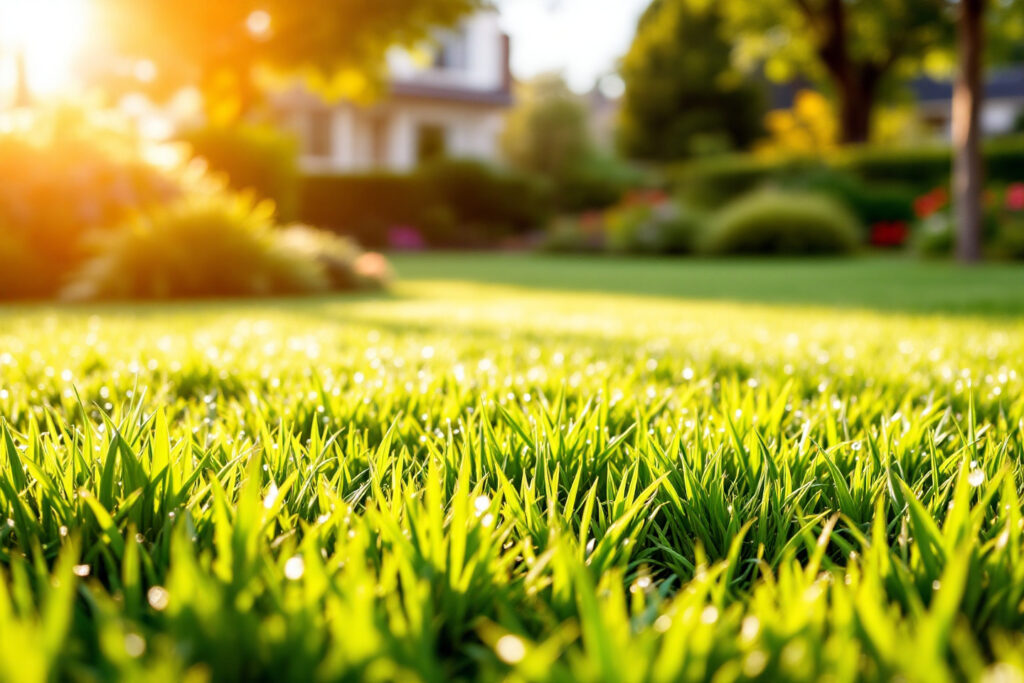You’ve trimmed the lawn, planted flowers, and set up the patio furniture, everything’s ready for a relaxing evening outside. But then…
Bzzzzzzzzzz.
The mosquitoes. And maybe some ants, gnats, or even wasps.
If you’ve ever wondered why your beautifully maintained lawn still attracts uninvited guests. Fortunately, with the right knowledge and tools, you can take control of mosquitoes and other insects safely and effectively.
Why Do Mosquitoes and Insects Target Your Yard?
Understanding what attracts bugs is the first step to controlling them.
🦟 Mosquitoes love[1]:
- Standing water – Even a bottle cap of water can become a breeding ground
- Tall grass, weeds, and shrubs – These offer shade and humidity
- Carbon dioxide – From humans and pets, especially when you’re active
- Body heat and sweat – Mosquitoes are attracted to lactic acid and body warmth
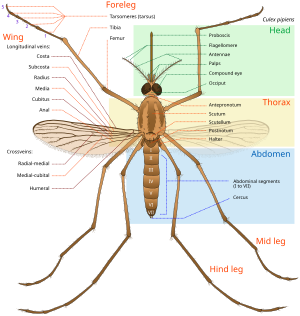
🐜 Other pests (ants, gnats, wasps) are drawn by:
- Food crumbs, sugary drinks, and pet food
- Mulch, compost piles, and trash bins
- Warm, moist, hidden areas to nest or burrow
📌 If your yard provides food, shelter, and water, bugs will move in like it’s free real estate.

10 Practical and Effective Ways to Keep Your Yard Bug-Free
1. Eliminate All Standing Water Sources
Mosquitoes lay eggs in still water. Remove or refresh:
- Buckets, birdbaths, kiddie pools
- Pet bowls (change daily)
- Clogged gutters or drains
- Planters and saucers under pots
- Unused tires or wheelbarrows
🧪 Fact: Mosquito eggs can hatch in 24–48 hours. Mosquitoes can develop from egg to adult in hot weather in as few as 5 days, but it may take up to a month. Eliminating water = stopping a generation before it starts.
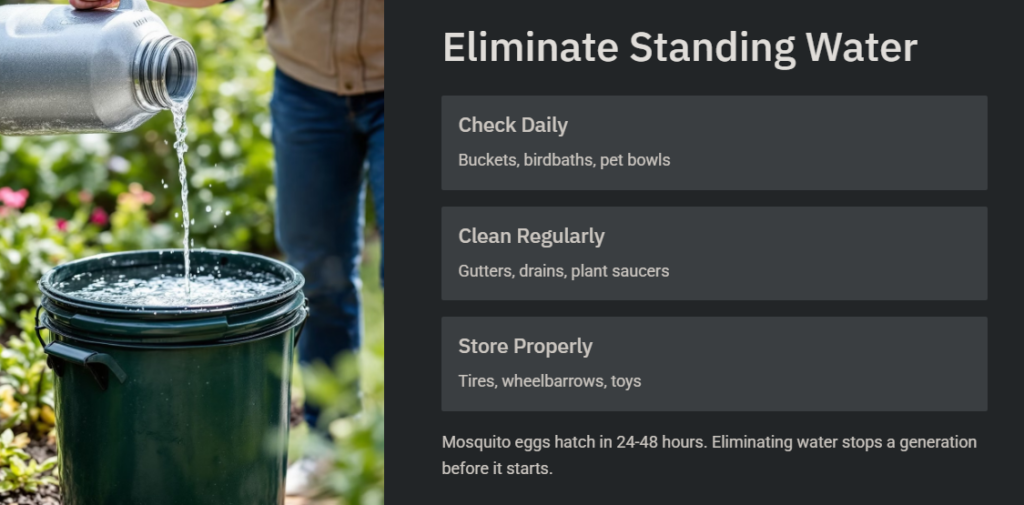
2. Maintain Your Lawn: Mow, Edge, and Weed
- Keep grass trimmed to 2.5–3.5 inches depending on your grass type
- Edge around fences, garden beds, and sidewalks where bugs hide
- Remove piles of leaves, debris, and thatch buildup
Thick, unkempt lawns act as cool, moist shelters for ticks, fleas, and mosquitoes—especially after rain.
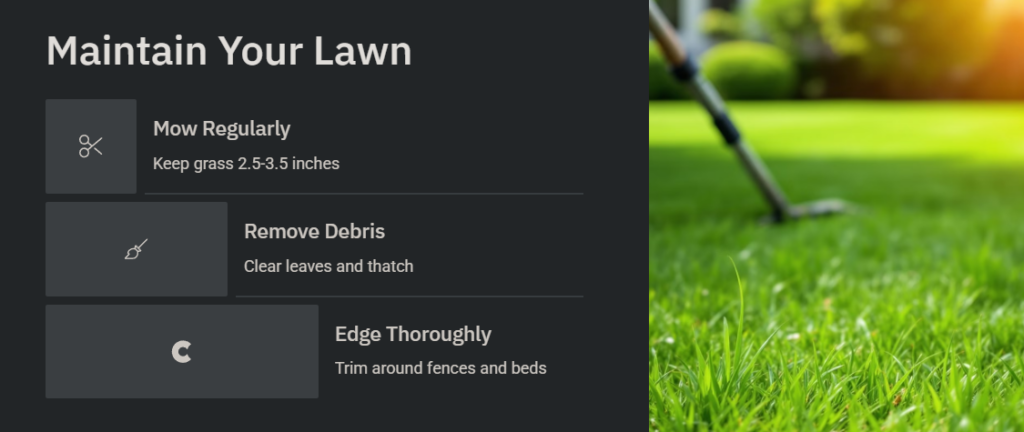
3. Use Plants that Naturally Repel Insects
Strategically planting bug-repelling greenery adds color and defense.
🌿 Top Choices:
- Citronella: Strong lemon scent deters mosquitoes
- Lavender: Repels moths, mosquitoes, and flies
- Marigolds: Natural nemesis to aphids and mosquitoes
- Lemongrass: Contains citronellal, a key mosquito repellent
- Basil, rosemary, mint: Great in your meals and terrible for bugs
📌 Place them near entryways, patios, and outdoor seating for maximum effect.
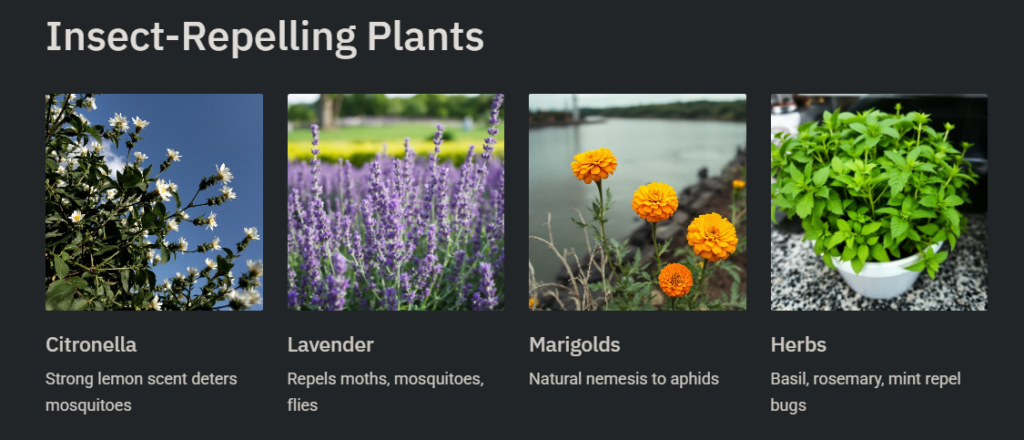
4. Create Airflow: Use Outdoor Fans
Mosquitoes are weak flyers. Adding oscillating or ceiling fans to patios and porches makes it harder for them to land.
This also keeps you cool and comfortable during hot summer evenings.
5. Change Your Outdoor Lighting Strategy
Standard white bulbs attract bugs.
Replace with:
💡 Yellow bug lights
💡 Amber or sodium vapor lights
💡 LED lights with lower UV emissions
📌 Use motion-sensor lights to reduce constant attraction.
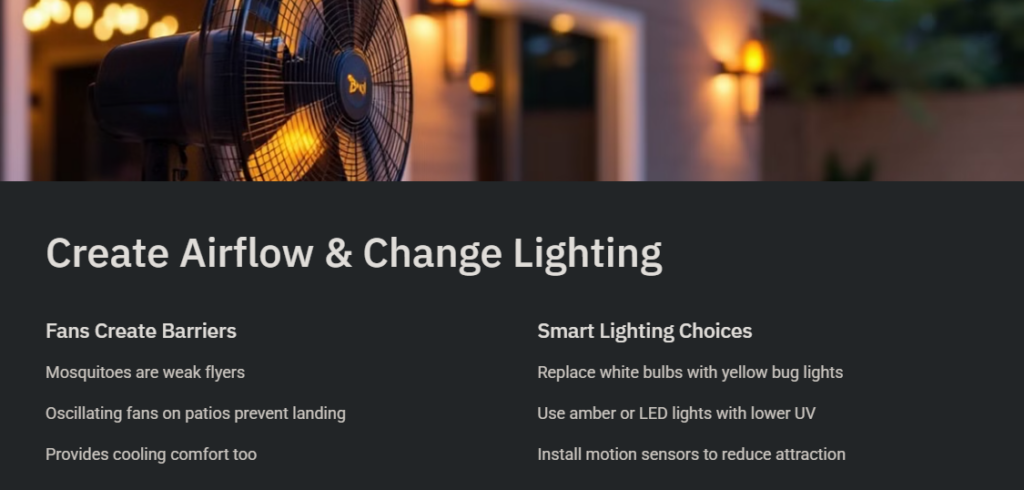
6. Apply Safe Insect Control Products (Judiciously!)
If you need to use sprays or granules, choose ones that are:
- Labeled for residential use
- EPA-approved for safety
- Pet- and pollinator-friendly (avoid spraying near flowering plants during the day)
🌿 Natural options:
- Cedar oil sprays
- Garlic oil treatments
- Neem oil-based formulas
🔬 Note: Natural sprays may require more frequent application but are gentler on your environment.
7. Use Mosquito Dunks or Larvicide in Ponds & Water Features
If you have a pond, birdbath, or rain barrel you can’t drain, use BTI (Bacillus thuringiensis israelensis) mosquito dunks.
✅ Safe for birds, pets, humans, and fish
🚫 Deadly for mosquito larvae
8. Check for Gaps, Screens, and Entry Points
- Repair any holes in window or door screens
- Use screen doors on patios and sunrooms
- Seal gaps around doors, vents, and foundation cracks

9. Create a Pest-Resistant Yard Layout
- Keep firewood stacked away from the house
- Leave a gravel border between lawn and wooded areas to deter ticks
- Avoid dense, overlapping plantings that trap moisture
10. Dress & Behave for Bug Safety
- Wear light-colored, loose-fitting clothes outdoors
- Apply DEET[2], picaridin, or oil of lemon eucalyptus when needed
- Avoid using strong perfumes when outdoors in the evening
- Install canopies or mosquito netting over dining or play areas
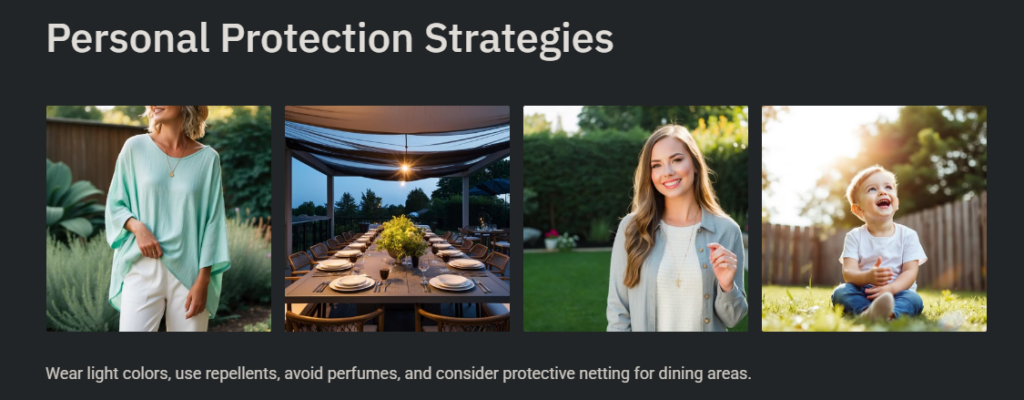
What About Ants, Wasps, Gnats & More?
- Ants: Use borax-based bait traps, vinegar spray, and caulk entry points
- Wasps: Remove old nests in early spring, use decoy nests to deter new colonies
- Gnats: Reduce overwatering of plants, use apple cider vinegar traps
- Fleas & Ticks: Apply diatomaceous earth or use beneficial nematodes to naturally reduce populations
Eco-Friendly, Pet & Kid-Safe Solutions
If you have little ones or furry friends roaming your yard, avoid harsh chemicals. Safer alternatives include:
- Diatomaceous earth for crawling insects
- Mosquito-repelling candles made with essential oils
- Cedar mulch in flower beds (repels fleas and ticks)
- Mosquito-repelling wearables (bracelets, clip-ons)
- Natural yard sprays made with garlic, peppermint, or lemongrass
📌 Always check labels for non-toxic or OMRI-listed[3] (organic) certifications.
Make Your Lawn a Place You Enjoy, Not the Bugs
A bug-free yard doesn’t require a hazmat suit or gallons of chemicals—just smart habits, the right plants, and some science-backed tools.
By identifying what attracts pests and taking consistent steps to reduce their habitat, you can reclaim your outdoor space and enjoy your lawn the way it was meant to be: peaceful, green, and yours.
Reference
- [1] Wikipedia, Mosquito
- [2] CDC, ToxFAQsTM for DEET (N,N-diethyl-meta-toluamide)
- [3] OMRI, OMRI Search

